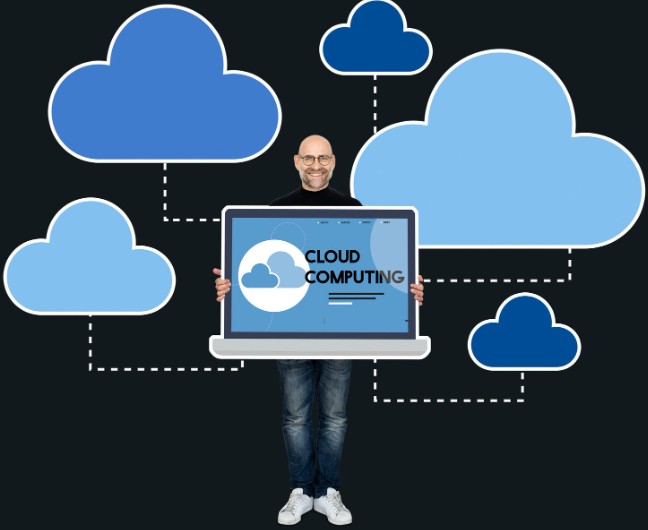In B2B marketing, reaching the right prospects with precision and relevance is essential for growth. One of the most effective approaches is Account-Based Marketing (ABM). ABM focuses on targeting high-value accounts with personalized campaigns, ensuring marketing efforts align closely with sales objectives. Acceligize emphasizes that ABM is an effective way to convert top-tier leads into long-term clients while maximizing ROI.
Importance of Targeted Account Strategies
Traditional marketing strategies often emphasize quantity over quality, generating leads that may not convert into meaningful revenue. ABM shifts the focus to high-value accounts that are most likely to deliver substantial returns. By concentrating efforts on these accounts, businesses can engage prospects with highly relevant content and messaging, improving the likelihood of conversion and fostering stronger relationships.
Identifying High-Value Leads
The foundation of ABM is selecting the right accounts to target. Businesses should analyze revenue potential, industry relevance, decision-maker influence, and prior engagement. Acceligize recommends using data-driven tools to prioritize accounts that align with business objectives and have the highest probability of success. Proper account selection ensures that marketing and sales resources are used efficiently.
Personalization and Engagement
Personalization is critical in ABM strategies. Every interaction, whether through email, digital ads, webinars, or website content, should be tailored to address the specific needs and challenges of the account. Personalized campaigns demonstrate understanding, build trust, and strengthen connections with decision-makers, resulting in higher engagement and conversion rates.
Aligning Marketing and Sales Teams
ABM requires seamless collaboration between marketing and sales. Marketing teams provide insights on account behavior and develop customized campaigns, while sales engages directly with key decision-makers. This alignment ensures a unified experience for the account and maximizes the effectiveness of outreach efforts. Shared KPIs and regular communication help maintain accountability and collaboration.
Leveraging Technology for ABM
Technology plays a key role in executing ABM successfully. CRM platforms, marketing automation tools, and AI-powered analytics enable teams to track account engagement, segment audiences, and deliver personalized campaigns. Platforms like Acceligize help identify buying intent signals, predict engagement opportunities, and optimize outreach, making ABM scalable and efficient.
Content Marketing for Key Accounts
Targeted content is a central element of ABM. Whitepapers, case studies, webinars, and reports tailored to the challenges of high-value accounts demonstrate expertise and provide solutions. Interactive content such as demos or virtual consultations enhances engagement and helps decision-makers see the value of the business’s offerings. Aligning content with the buyer journey ensures maximum impact at each stage of engagement.
Measuring ABM Performance
Success in ABM is measured using account-focused metrics rather than traditional lead-based KPIs. Metrics like account engagement, revenue contribution, deal velocity, and pipeline influence provide a better understanding of campaign effectiveness. Continuous monitoring and analysis of these metrics allow marketing teams to refine strategies and optimize outcomes for high-value accounts.
Building Long-Term Relationships
ABM emphasizes relationship-building with high-value accounts. Consistent, personalized engagement nurtures trust, loyalty, and advocacy. Ongoing communication also creates opportunities for upselling and cross-selling, maximizing the lifetime value of each account. Acceligize emphasizes that fostering strong client relationships is a critical outcome of effective ABM strategies.
Scalability and Collaboration
Collaboration between marketing, sales, and customer success teams ensures ABM campaigns are cohesive and efficient. Shared dashboards, regular updates, and open communication help maintain alignment. ABM is also scalable, allowing one-to-one campaigns for large accounts and one-to-few or one-to-many campaigns for medium-sized organizations. This flexibility makes ABM accessible to businesses of all sizes.
The Future of ABM Strategies
The future of Account-Based Marketing strategies will focus on advanced personalization, predictive intelligence, and integrated omnichannel engagement. AI and analytics will enable marketers to anticipate account needs and deliver highly relevant messaging at optimal times. Omnichannel ABM ensures consistent interactions across email, social media, events, and other touchpoints, driving stronger engagement, higher revenue, and long-term business growth.
Marketing and Sales Alignment
Successful ABM requires close collaboration between marketing and sales teams. Marketing provides insights on account behavior and crafts targeted campaigns, while sales engages directly with decision-makers. This alignment ensures a consistent experience for the account, reduces communication gaps, and enhances engagement and revenue.
Technology and Automation
Technology is crucial for executing ABM effectively. CRM systems, marketing automation, and AI-powered analytics allow teams to track account behavior, segment audiences, and deliver personalized campaigns. Platforms like Acceligize provide intelligence on intent signals, helping marketers optimize campaigns and scale ABM initiatives without losing personalization.
Content Marketing for High-Value Accounts
Content tailored to target accounts is a key driver of ABM success. Whitepapers, case studies, webinars, and industry reports that address account-specific challenges demonstrate expertise and provide value. Interactive content, including personalized demos and virtual consultations, enhances engagement and helps decision-makers understand the benefits of solutions offered.
Measuring ABM Success
ABM effectiveness requires metrics that go beyond traditional lead generation. Account engagement, pipeline influence, revenue contribution, and deal velocity are key indicators. Monitoring these metrics allows marketers to refine strategies, optimize campaigns, and ensure high-value accounts receive the attention needed for maximum impact.
Building Long-Term Client Relationships
ABM emphasizes nurturing strong relationships with key accounts. Consistent, personalized engagement fosters trust, loyalty, and advocacy. Additionally, it creates opportunities for upselling and cross-selling, maximizing lifetime value. Acceligize highlights that relationship-building is central to sustainable success in ABM.
Collaboration and Scalability
Collaboration among marketing, sales, and customer success teams is essential for ABM success. Shared dashboards, open communication, and regular updates ensure alignment. ABM is scalable, ranging from one-to-one campaigns for enterprise clients to one-to-few and one-to-many approaches for medium-sized businesses, making it effective for organizations of all sizes.
The Future of ABM Implementation
The future of ABM implementation focuses on deeper personalization, predictive analytics, and omnichannel engagement. AI and advanced analytics help marketers anticipate account needs, optimize timing, and deliver relevant messaging across multiple channels. Integrated ABM strategies ensure consistent engagement, stronger client relationships, higher revenue, and maximum business impact.
Read Full Article : https://acceligize.com/featured-blogs/what-is-account-based-marketing-abm/
About Us : Acceligize is a global B2B demand generation and technology marketing company helping brands connect with qualified audiences through data-driven strategies. Founded in 2016, it delivers end-to-end lead generation, content syndication, and account-based marketing solutions powered by technology, creativity, and compliance.


